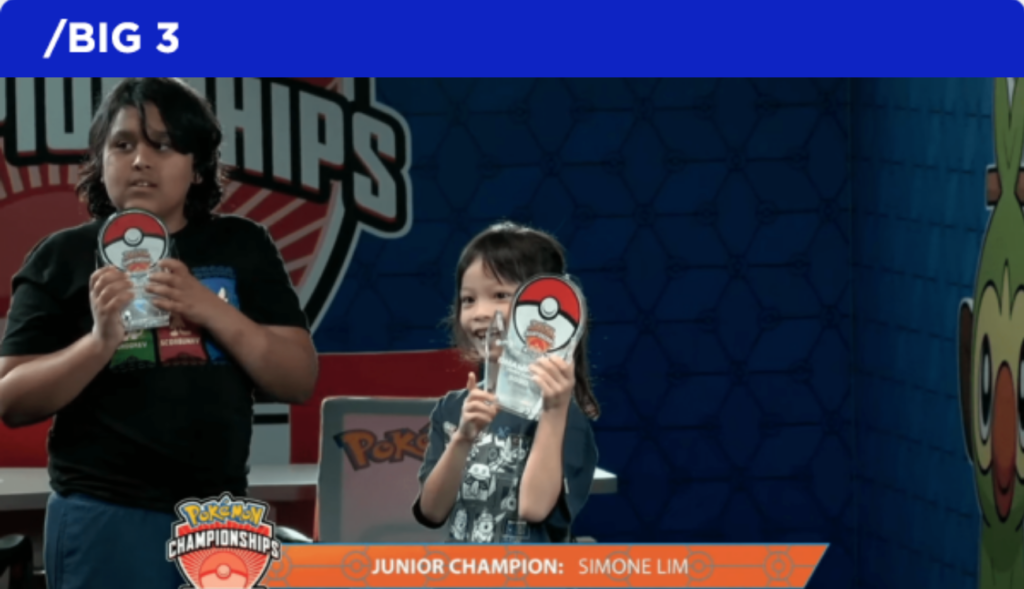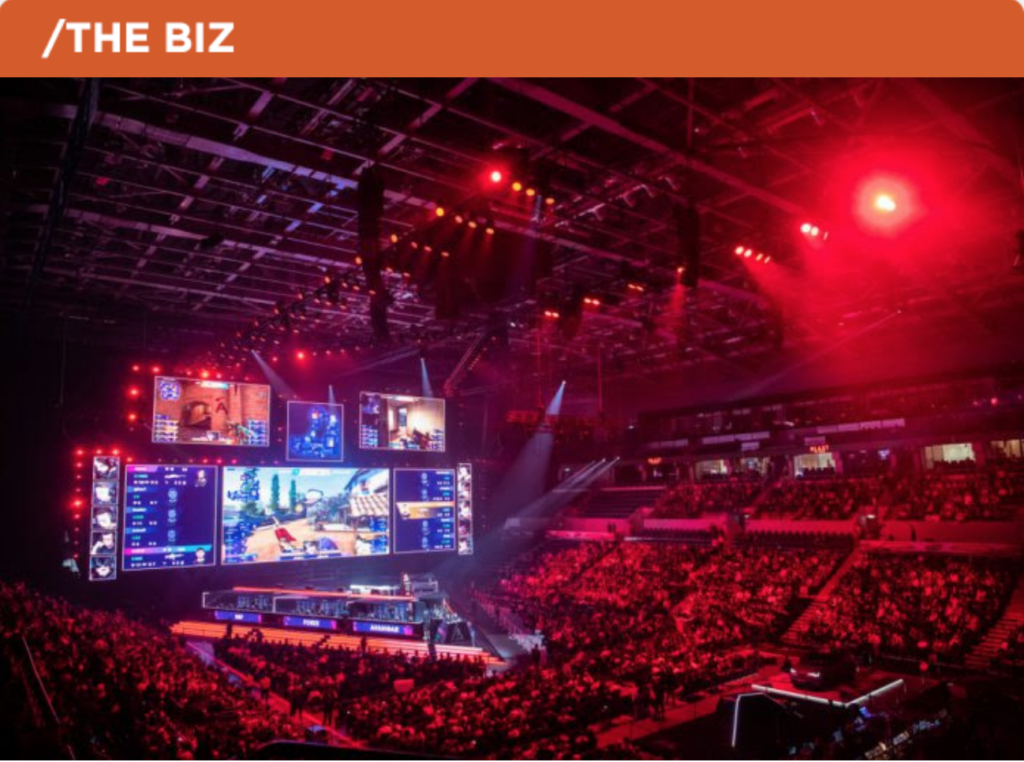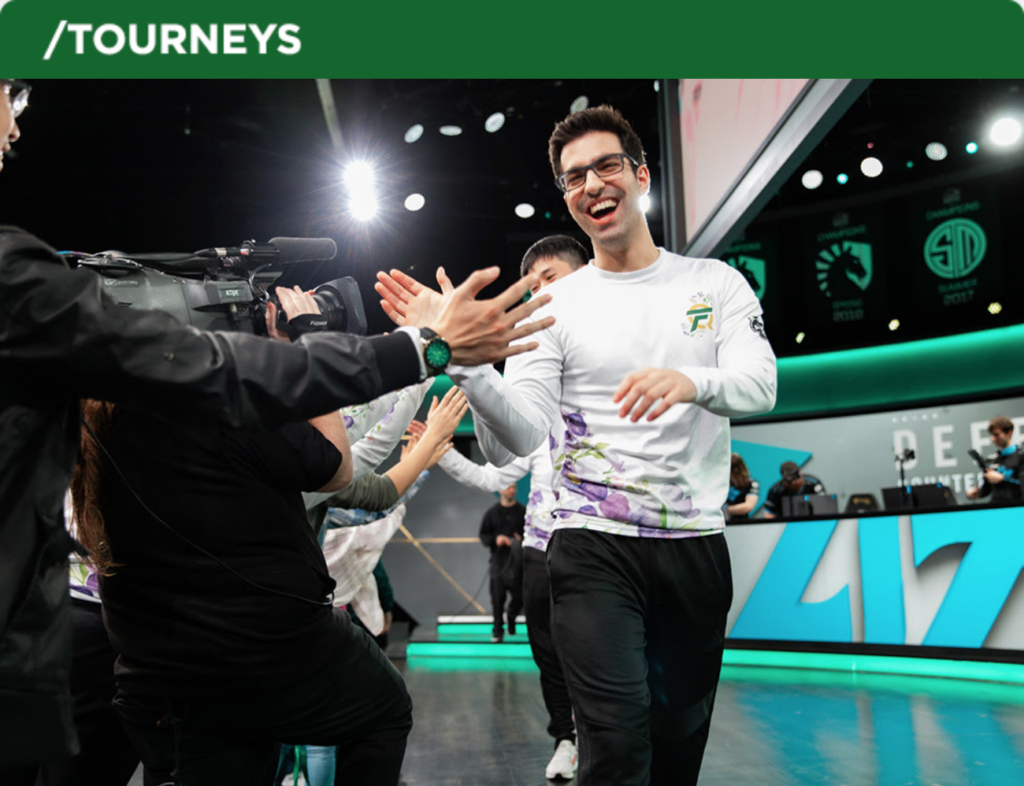


/A SEVEN-YEAR-OLD JUST BECAME AN ESPORTS CHAMPION
The recent 2020 Pokemon Oceania International Championships VGC Junior Division just took place and it has a new winner. The surprising part isn’t that the winner is a girl, however. It’s that she’s seven years old. In a rather surprising series of events, the young competitor had to take on a 21-time Regional Champion that was twice her age.
The makings of a movie: Simone Lim found herself in the finals of the Junior Division facing off against Justin Miranda-Radbord, a reigning champion in the competitive Pokemon scene. Right off at the beginning, she won the first match, but then lost the second. The final round was to be the deciding moment on who would become champion next, and Lim managed to make a strong comeback and become the new champion. When the match was completed, she just sat there smiling with glee and clearly happy to be where she was. She probably would have kept that smile even if she’d lost.
Accessibility of esports: This is yet another example of just how accessible esports can be for people. You don’t have to be at the peak of physical health or mental growth to make a place for yourself in the industry. Even the youngest of gamers can stand out and win against players with years of experience.
Looks like someone gets to stay up a little later tonight past bedtime to celebrate.

/ESPORTS ARE RIFE WITH EXPLOITATION
The esports industry is on track to break the $1 billion dollar mark for business in 2020. Events now take place in major stadium venues and attract massive audiences in the hundreds of thousands both physically and virtually. While game developers and esports organization executives bring in the big bucks, many at the bottom are forced to live at a wage that is insufficient to get by on.
Underpaid freelance workers and independent contractors: The massive salaries of Activision-Blizzard executives are made possible only through the efforts of young freelancers. These individuals come to the industry hoping to make it big, but they have to start at the bottom. And unfortunately that starting point is impossible to create a sufficient standard of living. For example, one tournament organizer put together events that brought together tens of thousands of competitors to play for massive prize pools in the hundreds of thousands. Despite organizing these massive tournaments, the organizer was stuck living at home with their parents. Then there’s broadcasters that host tournament brackets, oftentimes becoming a major face of broadcasts. But they’re only paid hundreds of dollars each day for a single weekend of work.
Untenable work: One former League of Legends LCS analyst was 18 years old and living with their parents when they signed on as an independent contractor for one of the league’s teams. They worked remotely for $2,000 a month, but “he felt like he was constantly on the clock.” Said the analyst, “It wouldn’t have been possible if I wasn’t living with my parents.” Despite the hope that this would be a stepping stone to bigger and better things, the employment opportunity turned into anything but. Even players face unsustainable returns for their effort, such as tournament prize pools. One Super Smash Bros. Melee player won all of $300 for placing in a tournament. They earned more in monthly subscriptions from streaming services like Twitch than from professional competitions.
Sometimes it pays to be realistic about dreams.

/SHANGHAI GOVERNMENT TO AID IN GETTING ESPORTS BACK ON TRACK FOR THE REGION
A press conference was recently held with the Shanghai municipal government. During this, a spokesperson answered a question regarding the esports industry in the city. The spokesperson had several things to say.
The impact on esports: For a quick perspective on how things in Shanghai have impacted esports, here’s some statistics. More than 80% of the Chinese esports industry’s teams and organizations are based out of Shanghai. Additionally, 40% of Chinese esports events are held in the city. Since the outbreak of the Coronavirus, more than 400 offline matches have been affected to varying degrees.
Switch to online tournaments: They first called organizers to prepare to switch to online tournaments as this would be the safest option for carrying forward with competitive leagues. The events most affected in the esports industry will receive priority support from the government.
Speed up content production: The second item the spokesperson brought up was speeding up the process that pushes out new content in esports, video games, streaming platforms, and other industries online so that the need for offline events is reduced.
Preparing for Worlds: The third item addressed was preparing for League of Legends Worlds 2020. Despite the epidemic occurring, the government wanted to be clear that it would continue to set up the proper infrastructure and environment for esports. No one wants to see Worlds fail, least of all the hosting city. League of Legends’ esports scene has been impacted greatly by the Coronavirus, with the LPL delayed since January and the LCK being played without live audiences.

We just had our latest MAINGEAR gaming backpack giveaway drawing! The lucky winner is Finn from Las Vegas. Congrats for winning and we’re grateful for everyone’s support!
Sad you missed out? Don’t worry. We’re doing more drawings every Tuesday! So if you aren’t a previous winner, you’ve already been thrown back into the drawing for our next backpack giveaway. Stay strong, your time will come!

/ESPORTS REVENUE TO EXCEED $1 BILLION
According to Newzoo’s 2020 Global Esports Market Report, esports revenue is expected to grow to $1.1 billion this year, a 15% increase over 2019’s figures of $950.6 million. The annual report now enters its sixth year and spans 100 pages of analytical data on esports growth. This will be the first time esports revenue exceeds $1 billion (previously the figure has been passed, but it included platform revenues).
Sponsorship’s the word: The vast majority of revenue comes from major sponsorships, such as Nike signing a four-year deal with China’s League of Legends competition (LPL), and Excel Esports forming an agreement with British Telecommunications. Media rights and sponsorship is expected to reach $1.2 billion by 2023, approximately 76% of the total revenue of esports. China holds the lion’s share of the market with $385.1 million, followed by North America at $252.6 million and Western Europe at $201.2 million.
Viewership trends: This year the report expects to see significant growth with regard to viewership. Throughout 2020, esports is expected to reach a global audience of 495 million people, an increase of 11.7% over 2019. The League of Legends Worlds Championship was the biggest tournament of 2019 with more than 105 million live hours watched on streaming platforms like Twitch and YouTube. Overwatch League, however, was the most-viewed league with 104 million live hours watched. Mobile esports has seen the biggest growth in viewership going from 15.3 million to 98.5 million hours watched in 2019.
I knew it’d pay off to stream stuff constantly on 10 browser tabs.

Get up to $750 off on MAINGEAR gaming rigs and accessories. Spend Your Holiday Gaming, Not Shopping For The Best Deal.
If you are ever in need of high-performance and incredible-build qualify powered by the most advanced technology, look no further than our friends at MAINGEAR. The team at MAINGEAR provide the best-in-class gear from gaming laptops and desktops to gaming chairs and backpacks.

/RIOT GAMES AND NIELSEN IMPLEMENT A NEW VIEWERSHIP METRIC FOR LCS
Riot Games first established a partnership with Nielsen in June 2019 to help identify returns on investment by sponsorship of League of Legends broadcasts. They’ve now expended this partnership to implement a new viewership system for their North American league, LCS. Dubbed “live+,” this measuring system will monitor video on demand viewership with greater accuracy.
How it works: The previous metrics used helped to identify the LCS as the third most-popular professional sports league among those aged 18-34 in the United States. The use of “live+” is an esports-first broadcast metric that will develop ratings in a new way. Not only will it still use the key “industry standard” metric utilized since the partnership was first formed, average minute audience (AMA), but it will also now factor in on-demand and replay videos to calculate audience figures. The metric is designed to mirror TV ratings, which has a time window of on-demand viewership alongside live audience to provide detailed engagement figures.
How this is good: The information collected by live+ will provide Riot Games with a method of comparing live and time-shifted televised content, which will be a first for the esports industry. Preliminary tracking from the 2019 season shows double-digit growth in LCS viewership through video on demand. A common criticism of esports viewership figures is that there is not established industry standard of measurement. Through the use of live+, this brings us closer to a metric that will provide the greatest value to sponsors and tournament organizers.

Congratulations again to Finn from Las Vegas for winning our backpack drawing!
We’re giving away a free gaming backpack every Tuesday to people who sign up here.
To start, you’ll get three entries in the drawing.
Want more? Then refer friends, follow us on social media, and more.
Love what you’re reading? Then forward us to your friends that love esports!